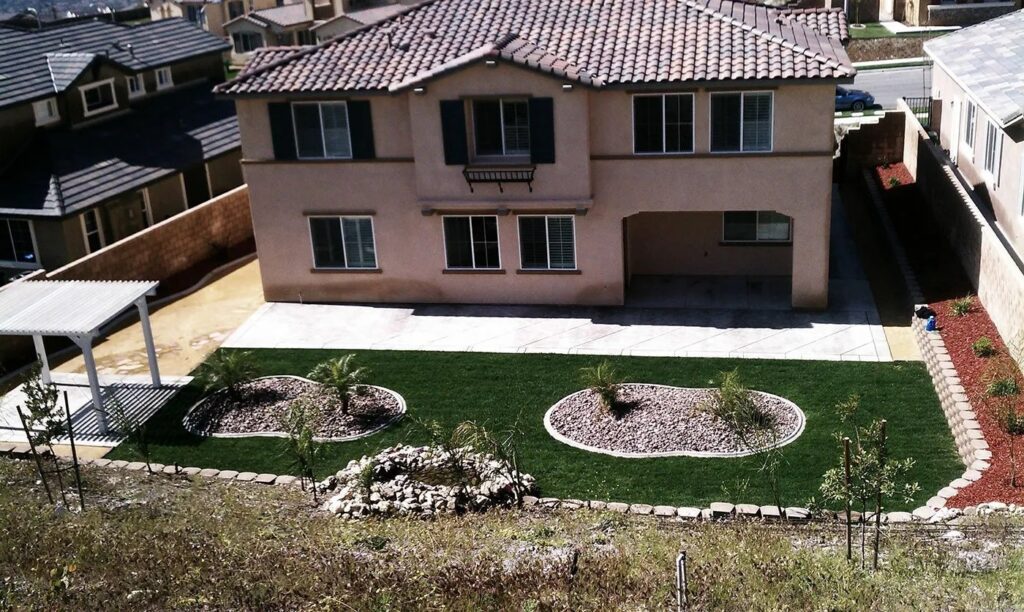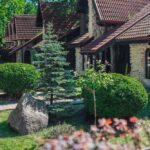
Imagine walking into a building that is not only visually appealing but also environmentally responsible. You breathe in the fresh air and wallow in the innate light that floods the space. In addition to that, the temperature is just right, and you feel comfortable and energized. It is the magic of sustainable design and green architecture, a trend rapidly gaining popularity in the world of architectural landscape design.
The trend of sustainable design and green architecture is driven by the need to reduce the detrimental impact of human activities on the environment. The consequences of environmental degradation are becoming increasingly apparent, and the need for sustainable practices has never been greater.
7 Reasons Sustainable And Green Architectural Landscape Is In Trend
With the increasing awareness about environmental degradation and the need to adopt sustainable practices, architects and designers are focusing on creating structures during back yard remodeling that are not only aesthetically pleasing but also environmentally responsible. The trend of sustainable design is driven by the need to reduce carbon footprints and promote a healthier living environment.
1. Energy Efficiency – “Designing for Efficiency and Comfort.”
Energy efficiency is an essential aspect of sustainable design that can lead to significant cost savings while reducing the building’s carbon footprint. The goal is to design buildings that require less energy to maintain a comfortable indoor environment.
Passive solar design principles are one approach that can be used to maximize the building’s exposure to natural light and heat while minimizing the need for artificial lighting and heating. Other strategies include using high-performance windows and insulation and optimizing the building’s orientation and layout to take advantage of natural ventilation.
2. Material Selection – “Sourcing Sustainable Materials.”
Choosing sustainable materials is another key component of sustainable architectural landscape design. Sustainable materials have a minimal impact on the environment and are socially responsible. However, designers can select materials made from renewable resources like bamboo, cork, or straw, recycled materials like glass or steel, or those with low embodied energy like adobe or rammed earth. The materials’ life cycle should also be considered, from extraction and production to transportation and disposal, to ensure that the environmental impact is minimized.
3. Water Conservation – “Harvesting and Reusing Water.”
Conserving water is essential in sustainable design, particularly in areas that experience water scarcity. One approach is to harvest and reuse water through rainwater harvesting and greywater systems. Conversely, low-flow fixtures and appliances can also be used to reduce water usage. Landscaping can also play a substantial role in water conservation by incorporating native and drought-tolerant plants that require less irrigation.
4. Biophilic Design – “Bringing Nature Indoors.”
Biophilic design aims to incorporate nature into the built environment, creating spaces that promote health and well-being. Natural light, views of nature, and the use of natural materials are all elements that can be incorporated into the design. Biophilic architectural landscape design has been shown to improve cognitive function, reduce stress, and promote healing, making it an important aspect of sustainable design.
5. Passive Design – “Designing with Nature.”
Passive design is a strategy that uses natural systems and processes to create comfortable and energy-efficient spaces. It can include the use of passive solar design, natural ventilation, and daylighting. By working with the natural environment, designers can create more sustainable, resilient, and comfortable buildings for occupants.
6. Net Zero Energy – “Generating Renewable Energy Onsite.”
Net zero energy buildings are designed to produce as much energy as they consume annually. It can be achieved through a fusion of energy effectiveness measures and the use of renewable energy sources like wind turbines, solar panels, or geothermal systems. Further, Net zero energy buildings are becoming increasingly popular as the price of renewable energy technologies continues to decline, making them an attractive option for sustainable architectural landscape design.
7. Green Roofs – “Creating Living Landscapes.”
Green roofs are a type of living roof that incorporates vegetation into the building’s roof system. Professionals provide a range of benefits, such as reducing stormwater runoff, improving insulation, and providing habitat for wildlife. Green roofs can also improve the aesthetic quality of the building, creating a unique and visually striking feature. Moreover, these experts can also help to reduce heat and improve air quality, making them an important aspect of sustainable design.
Revamp Your Yard With Our Experts!
When it comes to brightening your home, there’s no better choice than landscaping. And lucky for you, High Desert Affordable Landscaping is your go-to source for all things outdoor design. Our team of seasoned backyard landscaping professionals is here to listen to your needs and provide expert guidance on achieving your dream landscape without breaking the bank. With affordable prices and top-notch service, you can trust us to make your home the envy of the neighborhood.
